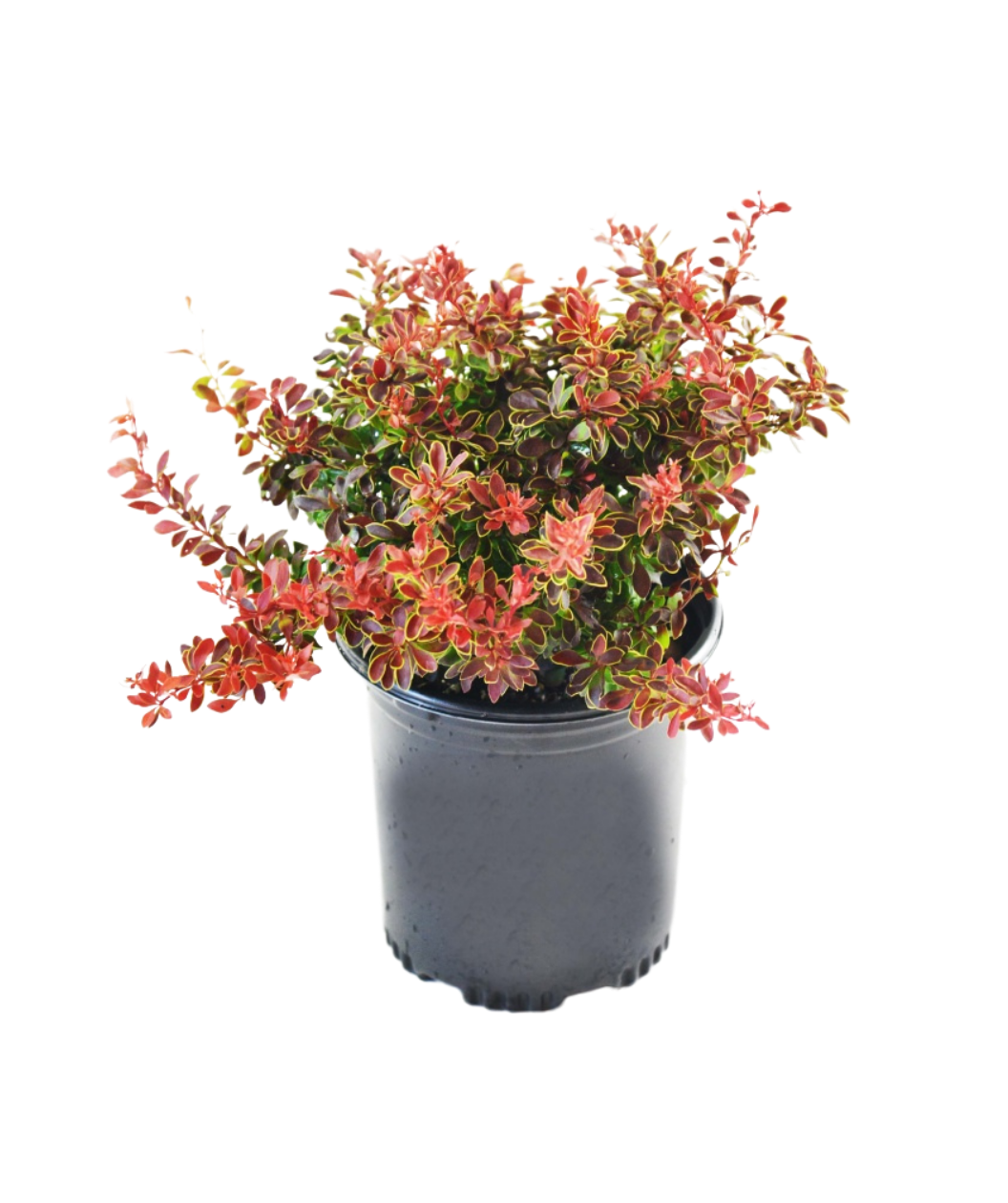

FEATURES:
- Hand Selected, Fresh from the Grower
- Ships in a plant-safe designed box
- Due to federal and state laws, we are unable to ship to: DE, IN, MA, MD, ME, MN, NH, NY, VT, WV
Growth Facts
- Hardiness Zone: 4-9
- Mature Height: 1-2' tall
- Mature Width: 1-2' wide
- Exposure: Full Sun/Part Shade
- Spacing: 1-2' apart
FEATURES:
- Hand Selected, Fresh from the Grower
- Ships in a plant-safe designed box
- Due to federal and state laws, we are unable to ship to: DE, IN, MA, MD, ME, MN, NH, NY, VT, WV
Growth Facts
- Hardiness Zone: 4-9
- Mature Height: 1-2' tall
- Mature Width: 1-2' wide
- Exposure: Full Sun/Part Shade
- Spacing: 1-2' apart
Why plant Admiration Barberry?
Flowers are fleeting, so smart designers bring long-lasting color to their landscapes with foliage. And you don’t get much more colorful foliage than Admiration Barberry’s! Part of our Perfect Accessories line, it features fiery scarlet leaves edged in bright yellow, making a festive display that’s matched by few other plants. From spring through fall, it holds its vivid color. Admiration’s petite size means that it fits into any garden, too. Use it singly as a vibrant color spot in your mixed borders, rock garden, or container plantings. For a bolder approach, plant it en masse to create a broad sweep of dazzling orange-red.
Japanese Barberries may have thorny branches, but they’re embraced by gardeners. Why? These perky plants are loved for their many shapes, sizes, and colors. There’s one for every sunny spot in the landscape. Admiration Barberry was developed in the Czech Republic by a nurseryman named Michal Andrusiv. Andrusiv developed it in the 1990s by crossing a mini yellow Barberry called Goldalita with a purple-red Barberry called Atropurpurea. He introduced Admiration to the world in 2005. The plant has been a hit all over, winning awards in the U.K. and performing like a champ even in the hot and humid Deep South here in our country.
How to use Admiration Barberry in the landscape?
Japanese Barberries have gotten a bad rap in recent years, because some of them have become invasive, particularly in the Northeast. Invasive plants can crowd out natives and disrupt local ecosystems. Admiration Barberry doesn’t flower, however, so it can’t set seed and become a problem. No need to worry!
Planting Zones
Hardiness Zone: 4-9
How To Plant Admiration Barberry
Grow Admiration Barberry in full sun to bring out its richest colors. Shade will make the leaves turn green. Choose a site where the soil drains freely, as this plant will not tolerate “wet feet.” It needs regular water during the establishment period, but will be quite drought tolerant after that. Little pruning will be necessary. Few insect pests or diseases trouble Barberries, and deer tend to leave the thorny branches alone. Japanese Barberries have come under fire lately for rampant reseeding in some areas, but Admiration so far has proven to be a non-fruiting clone.
How To Fertilize
Incorporate Elements Starter Plant food granular form into the soil when planting. If planting in spring or summer, start fertilizing late fall using Elements Starter Plant food granular form on an annual basis each late fall. Continue this for the first three years to get your plant well established.




